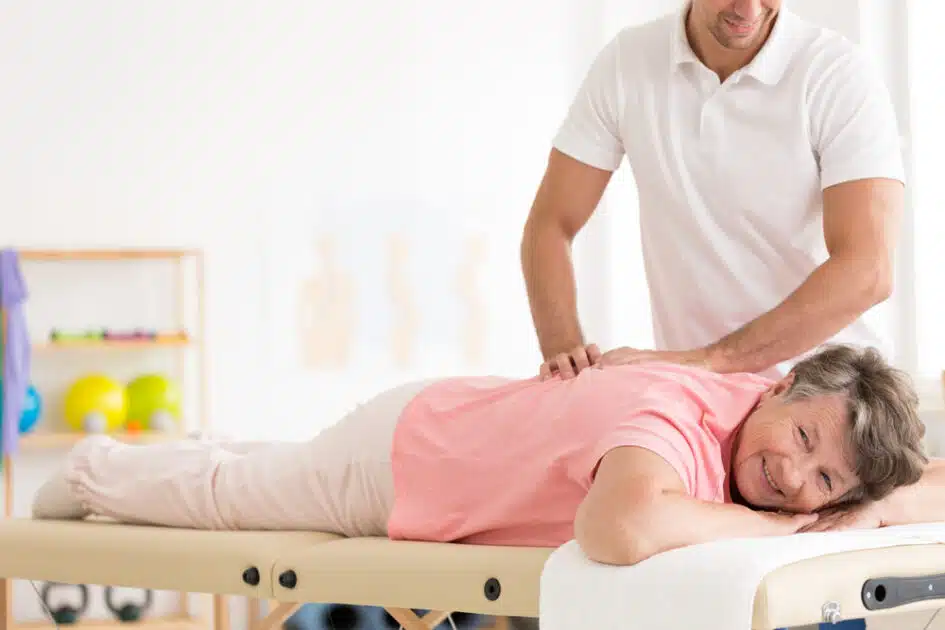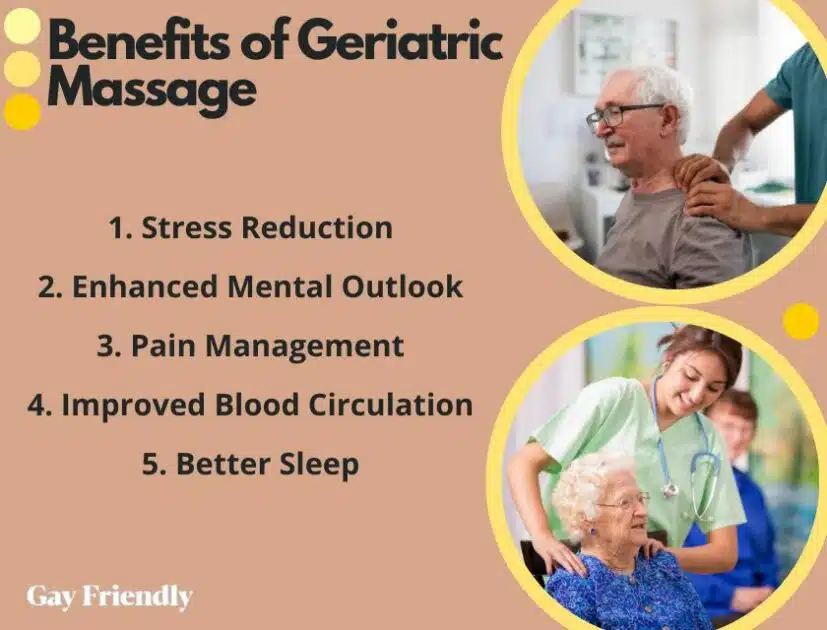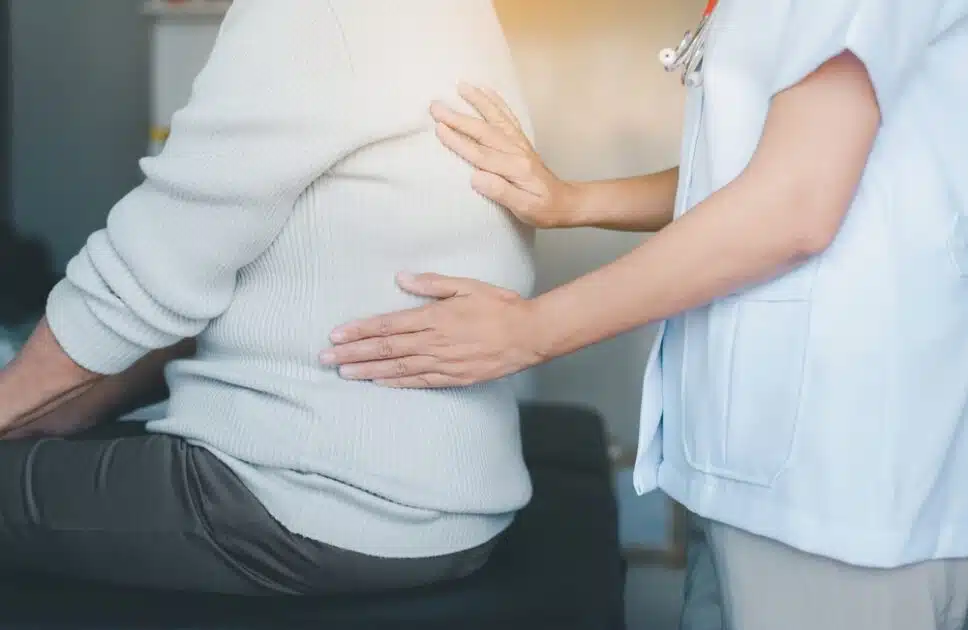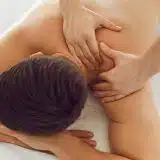Geriatric Massage: Promote Well-being and Mobility in Aging Adults

Geriatric Massage: Geriatric Massage for Senior Well-being
What is Massage 24th Jul, 2023
Aging brings unique health concerns. Health modalities cater to seniors, enhancing their quality of life. Geriatric Massage is a specialized therapy meeting elderly health needs, offering a safe and revitalizing experience. It combines elements from traditional techniques like Swedish massage, adapted for older adults.

The therapists are trained to navigate through common age-related ailments such as arthritis, diabetes, skin fragility, and more, delivering gentle and careful strokes that promote blood circulation, alleviate pain, and enhance mobility.
What is a Geriatric Massage?
Geriatric massage, a specialized kind of therapeutic bodywork, is a massage method that is deliberately designed to focus on the physical and mental welfare of older persons.
Unlike regular massages, which use deeper, more vigorous strokes, geriatric massage uses gentle manipulations to treat and alleviate the special health concerns associated with aging.
Benefits of Geriatric Massage
Geriatric massage has arisen as a therapeutic treatment that addresses elders’ physical as well as mental well-being. Its advantages go well beyond merely providing comfort. Let’s look at some of the benefits it provides:

- Stress Reduction
- Enhanced Mental Outlook
- Pain Management
- Improved Blood Circulation
- Better Sleep
Geriatric massage is a powerful tool that boosts the health and wellness of seniors. It highlights the healing influence of touch, particularly as we age.
Recommended:
Massage for Fibromyalgia
Geriatric Massage Precautions
While geriatric massage has many advantages, some care must be taken to protect the senior customers’ safety and comfort. Because of age-related changes in the body, certain locations and conditions require particular caution or outright avoidance during massage treatment. Here are some important precautions to take:

1. Avoid Massaging Calf Pain with Heat
Calf pain, particularly with warmth, might indicate phlebitis – a vein irritation disorder. Avoid massaging to prevent it from getting worse.
2. Obtain Doctor’s Consent
If a client has a history of blood clots or aneurysms, it’s crucial to get the doctor’s approval before starting massage treatment.
3. Avoid Deep Tissue Massage
In a geriatric massage, it’s best to keep the pressure gentle and soothing for maximum comfort.
4. No Massage on Open Wounds or Inflamed Areas
Massage should be avoided on any portion of the body that has open sores, skin ulcers, burn wounds, or eczema.
5. Massage should be avoided at the site
of a recent injury or operation until it has completely healed and has been cleared by the healthcare practitioner. Massage in these areas may cause more harm or postpone recovery.
6. Individual Assessment
Because everyone is different, what works for one person may not work for another.
For the safest and most beneficial experience, consult healthcare professionals and ensure that massage therapists are proficient in geriatric massage techniques.
Exploring Geriatric Massage
Geriatric massage focuses on the specific needs of seniors, aiming to address discomforts linked with aging. Unlike regular massages, it considers the changes that come with getting older.
Therapists are trained to adapt to these changes, like thinner skin and reduced muscle tone. The pressure is lighter and the strokes are gentler to promote relaxation and improve circulation.
Recommended:
Can Massage Help Arthritis
Looking for a geriatric massage therapist?
To ensure a positive geriatric massage experience, it’s crucial to find the right massage therapist. Here’s how you can find a qualified geriatric massage therapist:
- Ask your doctor, local health center, or community center for a recommendation.
- Check if your long-term care facility provides massage services.
- Search online for local massage therapists and inquire about their expertise in geriatric treatments.
Most states mandate massage therapists to hold a license. Verify the therapist’s credentials before scheduling a massage.
The Bottom Line
Geriatric massage is a great help in battling age-related issues and the effects of aging. It’s not just about easing physical discomfort – it’s tailored to the elderly’s specific needs, offering emotional support, pain relief, better sleep, and more.
This type of therapy can bring comfort and peace to those feeling lonely or down. Plus, it offers a nonverbal connection, which can boost feelings of security. Remember though, geriatric massage has its risks, so it’s crucial to consult healthcare professionals for safe and effective treatment.
FAQs
What type of massage is geriatric?
Geriatric massage is a form of massage designed specifically for the elderly, focusing on the aging body’s needs and providing gentle touch to enhance health and well-being.
Which massage consideration is appropriate for a geriatric client?
Use lighter pressure, shorter duration, and ensure a comfortable environment. Consider health issues and medications before treatment.
Are massages good for elderly?
Yes, they can improve blood circulation, alleviate pain, reduce stress, and enhance overall well-being.
What are contraindications for geriatric massage?
Fragile skin, recent surgeries, certain medications, and some health conditions like severe osteoporosis or deep vein thrombosis.
What is the biggest safety issue for elderly clients receiving massage?
The risk of injury due to fragile skin, brittle bones, or underlying health conditions is paramount. Proper positioning and gentle pressure are essential.
















